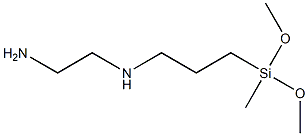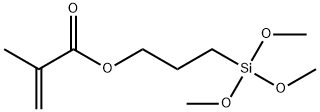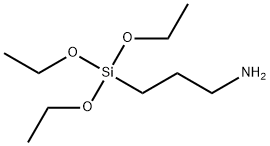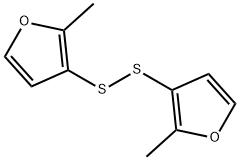Bis[3-(triethoxysilyl)propyl]tetrasulfide
Synonym(s):3,3′-Tetrathiobis(propyl-triethoxysilane);TESPTS
- CAS NO.:40372-72-3
- Empirical Formula: C18H42O6S4Si2
- Molecular Weight: 538.95
- MDL number: MFCD00053751
- EINECS: 254-896-5
- SAFETY DATA SHEET (SDS)
- Update Date: 2025-09-03 19:45:19
![Bis[3-(triethoxysilyl)propyl]tetrasulfide Structural](https://img.chemicalbook.in/CAS/GIF/40372-72-3.gif)
What is Bis[3-(triethoxysilyl)propyl]tetrasulfide?
Chemical properties
Yellowish clear liquid
The Uses of Bis[3-(triethoxysilyl)propyl]tetrasulfide
Bis[3-(triethoxysilyl)propyl] tetrasulfide (TESPTS) is generally used as a crosslinking agent and reinforcing filler in the manufacturing of rubber. TESPT film provides corrosion protection to the metallic substrates. It is also used as a precursor in the synthesis of mesoporous organosilicas.
The Uses of Bis[3-(triethoxysilyl)propyl]tetrasulfide
Bis[3-(triethoxysilyl)propyl]tetrasulfide is used in radial tires, rubber tire treads, carcass, tire walls, solid rubber tires and other rubber products. It acts as a chemical intermediate and as a cross linking agent. Furthermore, it acts as a coupling agent used to chemically modify silica surface. In addition, it serves as a curing agent for good heat aging.
Properties of Bis[3-(triethoxysilyl)propyl]tetrasulfide
| Boiling point: | 250 °C |
| Density | 1.08 g/mL at 20 °C(lit.) |
| refractive index | n |
| Flash point: | 91°C |
| form | Liquid |
| Specific Gravity | 1.095 |
| Water Solubility | Miscible with toluene, primary alcohols, ketones, benzene, chlorinated hydrocarbons, acetonitrile, dimethylformaminde and dimethysulfoxide. Immiscible with water. |
| Hydrolytic Sensitivity | 7: reacts slowly with moisture/water |
| BRN | 2062235 |
| CAS DataBase Reference | 40372-72-3(CAS DataBase Reference) |
| EPA Substance Registry System | 3,16-Dioxa-8,9,10,11-tetrathia-4,15-disilaoctadecane, 4,4,15,15-tetraethoxy- (40372-72-3) |
Safety information for Bis[3-(triethoxysilyl)propyl]tetrasulfide
| Signal word | Warning |
| Pictogram(s) |
 Exclamation Mark Irritant GHS07 |
| GHS Hazard Statements |
H315:Skin corrosion/irritation H319:Serious eye damage/eye irritation H335:Specific target organ toxicity, single exposure;Respiratory tract irritation |
| Precautionary Statement Codes |
P261:Avoid breathing dust/fume/gas/mist/vapours/spray. P271:Use only outdoors or in a well-ventilated area. P280:Wear protective gloves/protective clothing/eye protection/face protection. |
Computed Descriptors for Bis[3-(triethoxysilyl)propyl]tetrasulfide
| InChIKey | VTHOKNTVYKTUPI-UHFFFAOYSA-N |
New Products
4,4-Difluoropiperidine hydrochloride tert-butyl 9-methoxy-3-azaspiro[5.5]undecane-3-carboxylate Indole Methyl Resin N-Isopropylurea N,N-Dicyclohexylcarbodiimide(DCC) MELDRUMS ACID 5-METHYLISOXAZOLE-4-CARBOXYLIC ACID Magnessium Bis glycinate Zinc ascorbate 1-bromo-2-butyne 2-acetamidophenol 9(10H)-anthracenone Erythrosin B, 4-Piperidinopiperidine 2-((4-morpholinophenylamino) (methylthio) methylene) malononitrile 2,4-dihydroxybenzaldehyde 3-(4-morpholinophenylamino)-5-amino-1H-pyrazole-4-carbonitrile Methyl 2-methylquinoline-6-carboxylate 2,6-dichloro-4-nitropyridine 4-Bromo-2-chlorobenzonitrile 2-(benzylamino)acetic acid hydrochloride 4-(tert-Butoxycarbonylamino)but- 2-ynoic acid 3,4-dihydro-2H-benzo[b][1,4]dioxepine 1-Phenyl-1-cycloprppanecarboxylicacidRelated products of tetrahydrofuran








You may like
-
![Bis[3- (triethoxysilyl)propyl]tetrasulfide CAS 40372-72-3](https://img.chemicalbook.in//Content/image/CP5.jpg) Bis[3- (triethoxysilyl)propyl]tetrasulfide CAS 40372-72-3View Details
Bis[3- (triethoxysilyl)propyl]tetrasulfide CAS 40372-72-3View Details
40372-72-3 -
![Bis[3- (triethoxysilyl)propyl]tetrasulfide CAS 40372-72-3](https://img.chemicalbook.in//Content/image/CP5.jpg) Bis[3- (triethoxysilyl)propyl]tetrasulfide CAS 40372-72-3View Details
Bis[3- (triethoxysilyl)propyl]tetrasulfide CAS 40372-72-3View Details
40372-72-3 -
![Bis[3- (triethoxysilyl)propyl]tetrasulfide CAS 40372-72-3](https://img.chemicalbook.in//Content/image/CP5.jpg) Bis[3- (triethoxysilyl)propyl]tetrasulfide CAS 40372-72-3View Details
Bis[3- (triethoxysilyl)propyl]tetrasulfide CAS 40372-72-3View Details
40372-72-3 -
![Bis[3- (triethoxysilyl)propyl]tetrasulfide CAS 40372-72-3](https://img.chemicalbook.in//Content/image/CP5.jpg) Bis[3- (triethoxysilyl)propyl]tetrasulfide CAS 40372-72-3View Details
Bis[3- (triethoxysilyl)propyl]tetrasulfide CAS 40372-72-3View Details
40372-72-3 -
![Bis[3-(triethoxysilyl)propyl]tetrasulfide 98% (GC CAS 40372-72-3](https://img.chemicalbook.in//Content/image/CP5.jpg) Bis[3-(triethoxysilyl)propyl]tetrasulfide 98% (GC CAS 40372-72-3View Details
Bis[3-(triethoxysilyl)propyl]tetrasulfide 98% (GC CAS 40372-72-3View Details
40372-72-3 -
![Bis[3-(triethoxysilyl)propyl] tetrasulfide CAS 40372-72-3](https://img.chemicalbook.in//Content/image/CP5.jpg) Bis[3-(triethoxysilyl)propyl] tetrasulfide CAS 40372-72-3View Details
Bis[3-(triethoxysilyl)propyl] tetrasulfide CAS 40372-72-3View Details
40372-72-3 -
 20677-73-0 (2,2-diethoxyethyl)methylamine 98%View Details
20677-73-0 (2,2-diethoxyethyl)methylamine 98%View Details
20677-73-0 -
 3-(4-(hydroxyamino)-1-oxoisoindolin-2-yl)piperidine-2,6-dione 98%View Details
3-(4-(hydroxyamino)-1-oxoisoindolin-2-yl)piperidine-2,6-dione 98%View Details
Statement: All products displayed on this website are only used for non medical purposes such as industrial applications or scientific research, and cannot be used for clinical diagnosis or treatment of humans or animals. They are not medicinal or edible.
